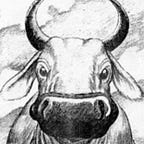Andorra — The Teacher of Cheops
Albert Salvadó is a little too impressed with the giant erections of ancient Egypt
There are only 70,000 people living in Andorra so I expected finding a book from there to be a struggle. So when my googling stumbled upon a blog post by someone who had set out to do just that and had only found one in English I didn’t look further than its recommendation.
I also didn’t finish reading the blog post until afterwards because it had spoilers. If I had I might have carried on looking a little longer, because this book has absolutely nothing to do with Andorra. I’m not entirely opposed to that: I don’t want to just read “the great Xian state-of-the-nation novel” 193 times in a row, and I was hoping that this challenge would cause me to read books of all sorts of different genres and on all sorts of different topics. But it would be nice to have found something in the text that told me something about Andorran culture or attitudes or society however indirectly. No such luck: this is a novel about the construction of the pyramids at the beginning of Egypt’s Fourth Dynasty the author of which just so happens to be from Andorra.
That said: it does seem to be pretty much Andorra’s only English language book (apart from the other ones by the same author listed in the back). In my attempt to find the blog post above for this piece I stumbled across two others. All three of them had run through the same challenge I am, and what unites all four of us is we’ve all read The Teacher of sodding Cheops. (Also all four of us use the phrase Reading Around the World! I swear I had no idea. Ann Morgan, stace8383, Laura Grigorova: congratulations, I’m not going to read any more of your blogs until I’m done in the hope that that way I’m more likely to end up reading different titles).
Anyway The Teacher of Cheops was originally self-published in Catalan and then developed enough of a following to win awards, distribution deals and translations. It’s a perfectly serviceable historical political thriller with a decent enough ending. There’s not much to say about it really.
There’s perhaps one thing that makes it noteworthy, and it’s definitely not good: it has a large number of exceptionally graphic and mostly entirely gratuitous sex scenes, the first one of which is pretty much on the second page. I’m pretty sure the book is not intended as erotica: there aren’t all that many and they are unevenly spaced — mostly occurring in a big clump two thirds of the way through. But there’s certainly more than the story needs. Translation has maybe done Salvadó no favours here — as Ann Morgan points out the translator clearly made frequent reference to a medical dictionary which renders what is supposed to be visceral as incongruously clinical — but even allowing for that these scenes contain some of the worst prose I have ever read. And it’s not even so bad that it’s fun because of something else; although here it’s maybe unfair to single out Salvadó for what is a genre problem. Historical fiction writers! We need to talk:
I do understand that you believe that writing historical fiction gives you a licence to write incredibly graphic sex scenes featuring thirteen year old girls and middle aged men, but do you have to leap at the opportunity with obvious enthusiasm? I’m not asking you to bowdlerise history, but maybe don’t embrace the horrible bits with such relish?
